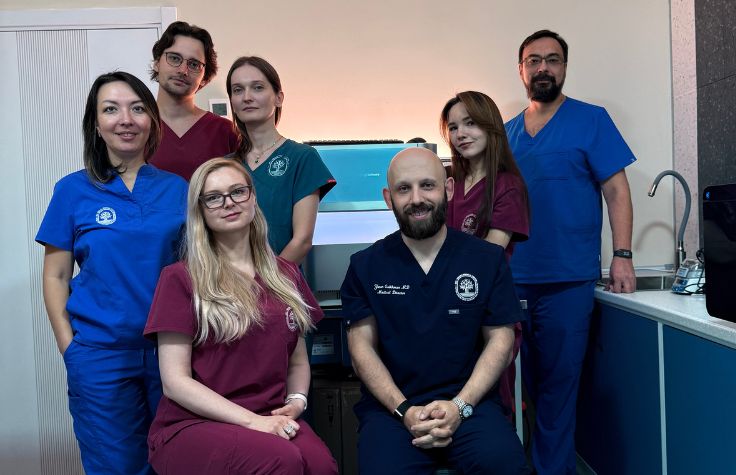
August 7, 2024
The podcast Mendelspod covers the latest developments in biotech and precision medicine. For 13 seasons and more than 10 years, host Theral Timpson has conducted longform interviews with scientists, executives, and journalists about the biggest ideas and newest technology driving these fields.
Through Illumina’s partnership with GenomeWeb, Staff Bioinformatics Scientist Bret Barnes appeared as Timpson’s guest on a recent episode.
Listen to the Mendelspod episode “The Actionable Epigenome with Bret Barnes, Illumina”
Barnes comes from a family of medical professionals and engineers, so when he studied bioinformatics at UC Santa Cruz, he saw it as a perfect marriage of the two disciplines. He joined Solexa and moved to Cambridge, England, in 2007, just as that company was being acquired by Illumina—and he’s been with Illumina ever since, working on DNA methylation products.
He helped develop the research-use-only Infinium Methylation Screening Array—but he says that in the early days, he was more excited about structural variant detection and didn’t truly understand the real value of methylation: “I obviously knew it from school, but didn’t realize how actionable it really was.”
What is epigenetics?
How is it that every one of your individual cells has the same genome, but the cells in each of your body’s organ systems are so different from one another? The DNA’s base-pair sequence alone can’t tell you what kind of cell it came from—for that, you need to study how certain chemicals, called methyl groups, have regulated the way different genes are expressed depending on the function of that cell. These markers and their activity, which don’t change the underlying DNA sequence, are called epigenetics.
Barnes boasts that the Infinium research array, which can analyze 270,000 methylation sites at the population scale, is without equal in the market. Asked why that is, he credits a few factors, especially the array’s high number of probes. “The probes that end up on the array aren’t just bioinformatically predicted to work well; we’ve empirically tested them to work well,” he says. The array’s screening process results in a very clean set of probes for most experiments, which makes for easier analysis.
What can we learn from our epigenome?
Timpson suggests that in clinical settings, even after a patient and their clinician have the patient’s genetic information, having their epigenetic information as well could change the course of their treatment.
One application of epigenetic study that’s gotten a lot of attention in the research community is GrimAge, a model that predicts a person’s epigenetic age, which changes in relation to their chronological age based on their environment and experiences. “Some parts of it are a little scary,” Barnes says, “in the fact that you can predict...I think it’s plus or minus three years, when you’re going to die.”
(Those who might not want to learn that about themselves may still be interested in finding out their pet’s age, which companies like Embark can do using a similar model.)
Barnes also mentions some promising work being done by the German group DKFZ, which can use DNA methylation to classify brain tumors; and a study in collaboration with the US Department of Veterans Affairs that’s investigating how methylation data, over time, correlates with the onset and severity of post-traumatic stress disorder.
Future applications of epigenetics
Asked for his thoughts on the future of Illumina technology, Barnes sees the most promise in the company’s efforts to sequence cell-free DNA (cfDNA)—fragments that are released into the bloodstream after a cell dies, which can be useful for liquid biopsies and prenatal diagnostics. He sees huge research potential for cfDNA sequencing in the Infinium Methylation Array, and predicts that an explosion in epigenetic testing is coming.
Sequencing data from cfDNA could also be used for cancer prevention. Barnes admits that he sees cancer not as a disease, but as an inevitable fact of life. “The best way to beat cancer, though, is to identify it early,” he says. Early prevention is key, “rather than trying to come up with a drug for each individual cancer—because, theoretically, there’s 3 billion different possibilities.”
Looking at methylation patterns in cfDNA could tell us whether the cells of certain body systems are dying at faster rates—for example, if there’s far more cfDNA from liver cells than other organs, it might be a valuable early warning sign to moderate alcohol intake and head off liver disease. “Which I couldn’t do with just looking at genomics. I can only do that looking at methylation.”
For bioinformaticians like Bret Barnes, being able to visualize and analyze methylation data with other omics data is crucial to maximizing discovery potential. To learn more about Illumina array and bioinformatics enablement, click here.


